
INTERNATIONAL JOURNAL OF OFFSHORE AND POLAR ENGINEERING
Scope & Guideline
Exploring the Frontiers of Offshore and Polar Engineering
Introduction
Aims and Scopes
- Offshore Renewable Energy Systems:
Research on the design, analysis, and performance of offshore renewable energy structures, particularly floating offshore wind turbines and wave energy converters, using advanced numerical simulations and experimental methods. - Marine Structural Integrity and Safety:
Focus on the assessment and enhancement of the structural integrity of marine structures, including pipelines, platforms, and vessels, through methodologies like finite element analysis and hybrid modeling techniques. - Hydrodynamics and Fluid-Structure Interaction (FSI):
Investigation of hydrodynamic forces acting on marine structures and the interactions between fluids and structures under various conditions, utilizing computational fluid dynamics (CFD) and smoothed particle hydrodynamics (SPH) methods. - Ice and Environmental Interaction Studies:
Examination of the effects of sea ice dynamics on offshore operations, including ice forces on structures and the impact of environmental conditions on marine engineering. - Machine Learning and Data-Driven Approaches:
Integration of machine learning techniques for predictive modeling and real-time monitoring in offshore engineering applications, enhancing decision-making processes and operational efficiencies. - Numerical Modeling and Simulation:
Development and application of advanced numerical methods for simulating complex marine phenomena, including wave interactions, sediment transport, and multi-phase fluid dynamics.
Trending and Emerging
- Advanced Numerical Methods and Hybrid Modeling:
Increased focus on hybrid modeling techniques that combine various numerical methods, such as finite element analysis with machine learning approaches, to enhance predictive capabilities and accuracy. - Sustainability in Offshore Engineering:
Growing emphasis on sustainable practices in offshore engineering, including the development of eco-friendly materials and energy-efficient designs for marine structures. - Real-time Monitoring and Predictive Maintenance:
Emerging research on real-time monitoring systems and predictive maintenance strategies using data assimilation and machine learning, aimed at improving operational efficiency and safety. - Behavior of Floating Structures in Extreme Conditions:
In-depth studies on the dynamic response of floating structures under extreme environmental conditions, such as freak waves and severe ice interactions, reflecting the need for resilient design. - Integration of Artificial Intelligence in Marine Applications:
Rising interest in applying artificial intelligence techniques for optimization, control, and analysis in marine engineering, enhancing the efficiency of operations and designs.
Declining or Waning
- Traditional Ship Design Approaches:
Research centered on conventional ship design methodologies has decreased, as newer technologies and modeling techniques gain traction in the field. - Static Structural Analysis:
There is a noticeable decline in studies focused solely on static analysis of marine structures, as dynamic and fluid-structure interaction analyses become more prevalent. - Basic Environmental Impact Assessments:
Basic assessments of environmental impacts, without advanced modeling or mitigation strategies, are appearing less frequently, indicating a shift towards more comprehensive and innovative approaches. - Conventional Material Studies:
Research focusing on traditional materials without consideration of new composites or environmental factors is diminishing, as the field moves towards more sustainable and advanced materials.
Similar Journals
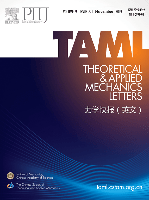
Theoretical and Applied Mechanics Letters
Championing Open Access to Transformative Engineering DiscoveriesTheoretical and Applied Mechanics Letters, published by ELSEVIER, stands as a premier journal in the field of engineering and applied mechanics, recognized for its rigorous peer-reviewed articles that advance theoretical and practical frameworks. With an impressive open access policy established in 2015, the journal enhances global accessibility to cutting-edge research across a range of disciplines including Aerospace, Civil, Mechanical, and Biomedical Engineering, along with Computational Mechanics and Ocean Engineering. The journal boasts an enviable position in the academic landscape, achieving a Q1 rank in several categories as of 2023, while being cited among the top percentiles in Scopus Ranks, specifically ranking #25 in Aerospace Engineering and #15 in Computational Mechanics. The journal aims to foster innovation by providing a platform for scholars and professionals to disseminate their findings, thereby bridging the gap between theoretical research and practical applications. By promoting a diverse range of topics and methodologies, Theoretical and Applied Mechanics Letters not only contributes to the advancement of engineering disciplines but also supports the global academic community in exploring sustainable and impactful engineering solutions.

PROCEEDINGS OF THE INSTITUTION OF MECHANICAL ENGINEERS PART C-JOURNAL OF MECHANICAL ENGINEERING SCIENCE
Exploring the frontiers of mechanical engineering science.PROCEEDINGS OF THE INSTITUTION OF MECHANICAL ENGINEERS PART C - JOURNAL OF MECHANICAL ENGINEERING SCIENCE, published by SAGE Publications Ltd, stands as a pivotal resource in the field of mechanical engineering, encompassing a wide array of topics from advanced materials to fluid dynamics and system design. With an impact factor reflective of its esteemed reputation, as indicated by its Q2 ranking in the Mechanical Engineering category, this journal serves as a vital forum for researchers, practitioners, and students alike. The journal boasts a rich history, converging research from 1983 to 2024, showcasing innovations and advancements that shape the mechanical engineering landscape. Although it is not an open-access publication, the insights and studies published herein provide invaluable contributions to the engineering community, fostering knowledge exchange and collaborative advancements. Researchers seeking a platform for their pioneering work will find Part C an ideal venue to disseminate their findings and engage with peers in this dynamic field.

Marine Intellectual Technologies
Navigating the forefront of marine scholarship and discovery.Marine Intellectual Technologies is an innovative open-access journal dedicated to advancing the field of marine science and technology. Published by the Research Centre Marine Intelligent Technologies, this journal serves as a platform for researchers, professionals, and students to share their latest findings and developments related to marine engineering, oceanography, and aquatic systems. With its commitment to disseminating high-quality research, Marine Intellectual Technologies plays a pivotal role in fostering collaboration and knowledge exchange among the global marine research community. Although the journal's impact factor is currently under review, its focus on embracing cutting-edge technologies and methodologies positions it at the forefront of marine scholarship, allowing for greater insights into sustainable ocean use and marine resource management. Additionally, the accessibility of research published in this journal supports the ongoing educational pursuits of scientists and practitioners alike, ensuring that important marine research is readily available to all.

International Journal of Multiphysics
Advancing Engineering Through Multiphysical InsightsWelcome to the International Journal of Multiphysics, a pioneering platform dedicated to the expansive field of multiphysics and its applications across various engineering disciplines. Published by MULTI-SCIENCE PUBL CO LTD since 2007, this Open Access journal plays a crucial role in disseminating innovative research findings that advance our understanding of complex interactions in multiphysical phenomena. With its ISSN 1750-9548, the journal has made significant contributions within its converged years from 2010 to 2024, offering insights into Computational Mechanics, Fluid Flow, Mechanical Materials, and Numerical Analysis with a current classification in the Q4 Quartile across multiple relevant categories. Researchers, professionals, and students will find valuable information and cutting-edge studies by accessing the journal from the United Kingdom, and thus contribute to ongoing dialogues in these critical areas of study. The International Journal of Multiphysics represents an essential resource for those aiming to innovate and enhance our knowledge of interactive systems in engineering and applied sciences.

APPLIED OCEAN RESEARCH
Empowering Solutions for a Sustainable Ocean FutureApplied Ocean Research, published by Elsevier Scientific Ltd, stands as a premier journal in the field of ocean engineering, with an impressive impact factor derived from its esteemed reputation and contributions to the discipline. Having been established in 1979, the journal has continually provided a platform for groundbreaking research, fostering innovation and advancement in applied ocean science through a diverse array of topics, including marine technology, coastal engineering, and ocean energy. Currently holding a prestigious Q1 ranking in the Scopus category of Ocean Engineering, with a rank of 10 out of 105 and a notable 90th percentile, Applied Ocean Research is a vital resource for researchers, professionals, and students dedicated to understanding and solving complex challenges linked to ocean environments. Although it provides subscription-based access, the depth and quality of research featured make it a key reference point for those in academia and industry alike. Located in the heart of London, this journal embodies a commitment to excellence in the study of ocean phenomena, positioning itself as a critical conduit for knowledge dissemination and professional growth in this dynamic field.
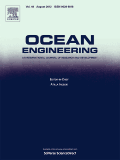
Ocean Engineering
Exploring the Frontiers of Marine ScienceOcean Engineering, published by PERGAMON-ELSEVIER SCIENCE LTD, is a prestigious peer-reviewed journal that has been at the forefront of marine sciences since its inception in 1968. With an impressive impact factor and recognition in the Q1 quartile of both Environmental Engineering and Ocean Engineering, it stands as a key resource for researchers, professionals, and students alike. This journal focuses on a wide range of topics relevant to the field, including coastal engineering, marine resource management, and ocean dynamics, aiming to bridge theoretical research and practical applications. As ranked 14th in Ocean Engineering according to Scopus, it reflects the influential contributions of its articles and provides a platform for innovative discoveries that advance the field. Although not open-access, it offers diverse subscription options for accessing cutting-edge research. The journal’s ongoing legacy of publishing high-quality research continues to contribute significantly to the advancement of knowledge in ocean-related engineering disciplines.
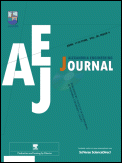
Alexandria Engineering Journal
Fostering global collaboration in engineering advancements.Alexandria Engineering Journal is a premier open access publication dedicated to advancing the field of engineering. Published by ELSEVIER and headquartered in Amsterdam, the Netherlands, this journal has been at the forefront of disseminating innovative research since its inception in the year 2000. With its impressive Q1 ranking within the Engineering (miscellaneous) category and a notable position as #20 out of 307 in the Scopus rankings, it serves as a vital resource for scholars and practitioners alike, ensuring that cutting-edge findings reach a global audience. The journal is accessible to all since adopting open access policies in 2010, thereby facilitating the sharing of valuable insights without barriers. As we approach the convergence of years from 2000 to 2024, the Alexandria Engineering Journal continues to play a pivotal role in shaping engineering practices and underpinning significant advancements in the field.
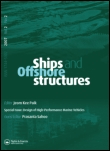
Ships and Offshore Structures
Transforming Challenges into Opportunities in Offshore StructuresShips and Offshore Structures, published by Taylor & Francis Ltd, is a premier academic journal dedicated to advancing research in the fields of mechanical and ocean engineering. With an esteemed ISSN of 1744-5302 and an E-ISSN of 1754-212X, this journal has established a strong reputation, reflected in its Q2 ranking in both the Mechanical Engineering and Ocean Engineering categories, as well as its impressive Scopus rankings. The journal provides a platform for the publication of high-quality, peer-reviewed articles that address innovative design, construction, and operational challenges faced in the maritime and offshore industries. Although the journal does not currently offer open access, its accessibility through institutional subscriptions ensures that it remains a valuable resource for researchers, professionals, and students alike. By fostering interdisciplinary dialogue and disseminating cutting-edge research, Ships and Offshore Structures plays a crucial role in shaping the future of marine technology and engineering practices on a global scale.
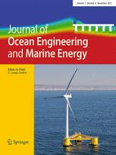
Journal of Ocean Engineering and Marine Energy
Bridging Academia and Industry for Marine SustainabilityJournal of Ocean Engineering and Marine Energy, published by SpringerNature, stands at the forefront of interdisciplinary research within the fields of ocean engineering and marine energy. Since its inception in 2015, this journal has aimed to address critical challenges and innovations in energy systems, particularly those harnessed from marine environments, thereby contributing to sustainable development and efficient resource management. With an esteemed Q2 ranking in multiple categories such as Energy Engineering and Power Technology, and Ocean Engineering, the journal serves as a vital platform for researchers, professionals, and students seeking to disseminate and engage with cutting-edge research and technological advancements. Boasting a robust readership and a commitment to open-access principles, the journal fosters a collaborative environment for the exploration of new ideas and approaches in a rapidly evolving sector. By bridging the gap between academia and industry, Journal of Ocean Engineering and Marine Energy remains instrumental in shaping the future of renewable energy solutions and environmental sustainability.

COMPUTERS & FLUIDS
Bridging Theory and Application in Fluid Dynamics ResearchCOMPUTERS & FLUIDS, published by PERGAMON-ELSEVIER SCIENCE LTD, is a premier journal in the fields of Computer Science and Engineering, with a distinguished history dating back to 1973. Its Q1 ranking in both Computer Science (Miscellaneous) and Engineering (Miscellaneous) illustrates its high impact and relevance, being positioned among the top tier of scientific publications. With a robust focus on the intersection of computational methods and fluid dynamics, this journal serves as a vital platform for researchers, professionals, and students dedicated to advancing knowledge and technology within these domains. Although it is not an open-access journal, its articles are accessible through various academic institutions and libraries, ensuring that vital research reaches its intended audience. Readers can explore innovative methodologies and applications, reinforcing the journal's commitment to enhancing the understanding of fluid mechanics through cutting-edge computational approaches. For more details, visit the official website of COMPUTERS & FLUIDS to stay abreast of the latest research advancements.